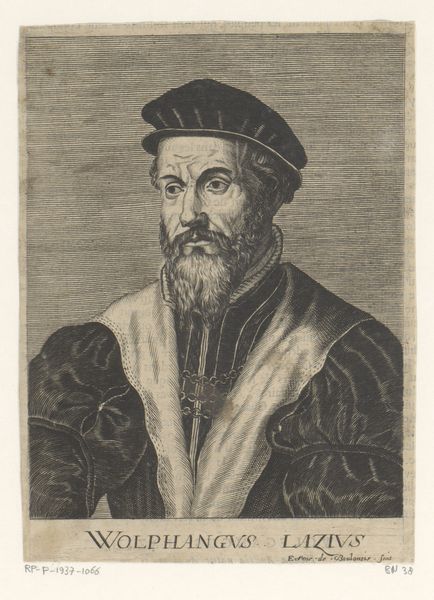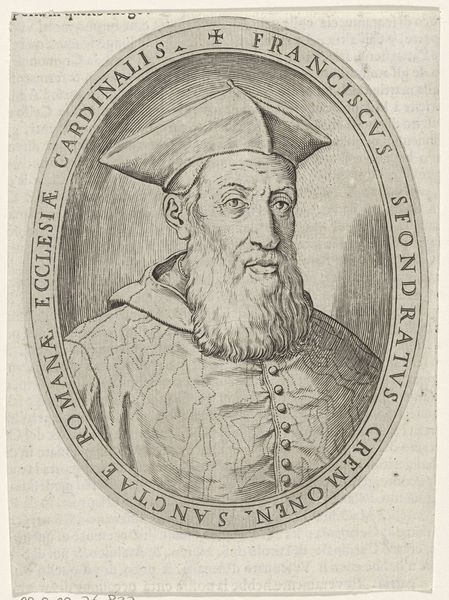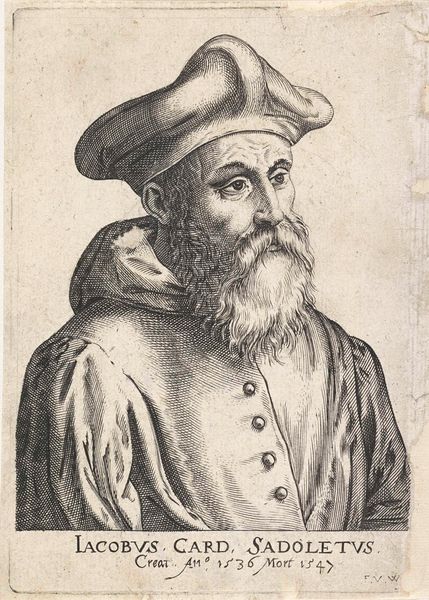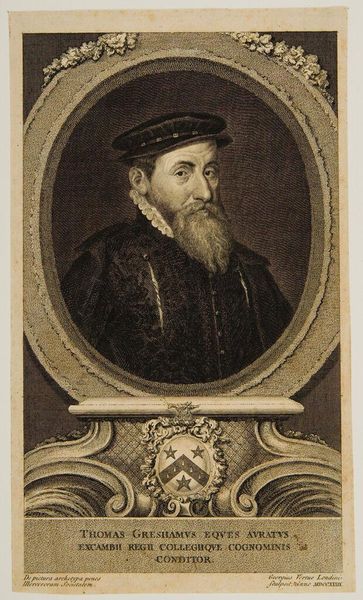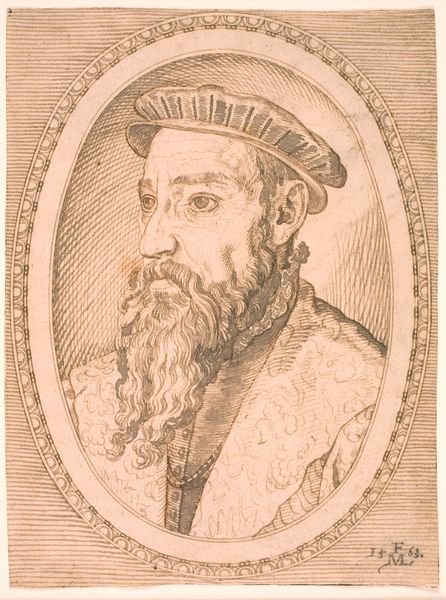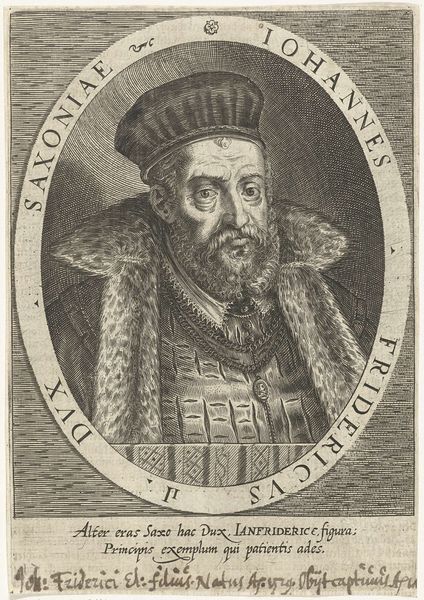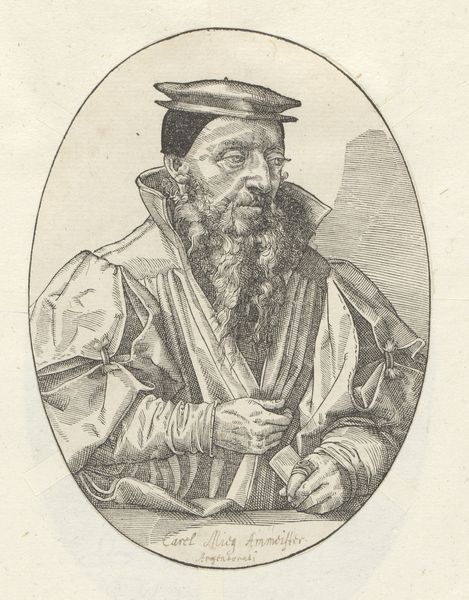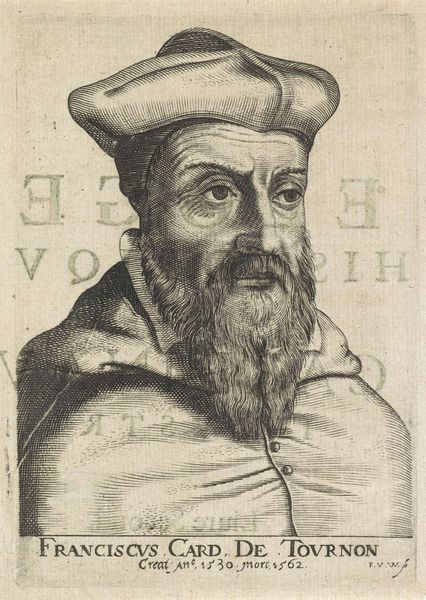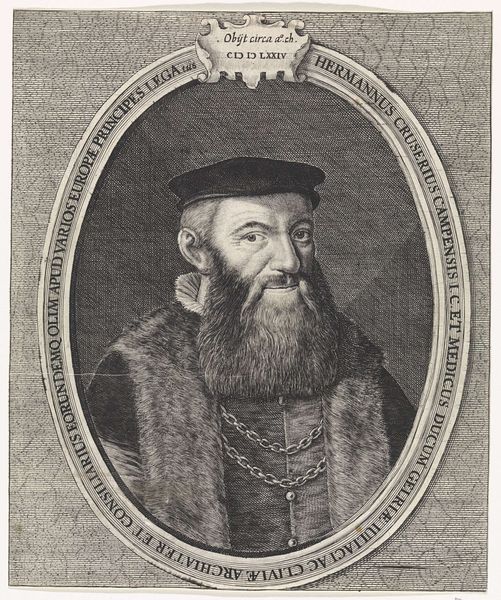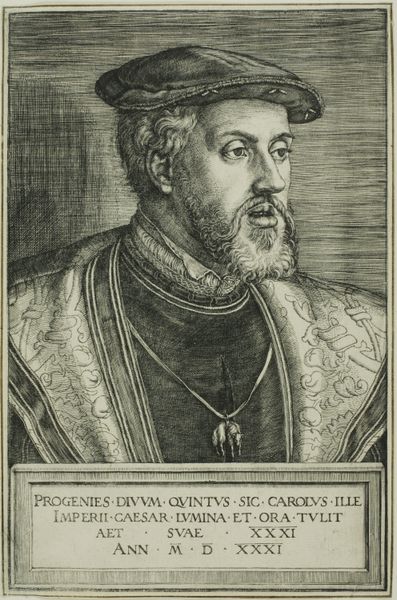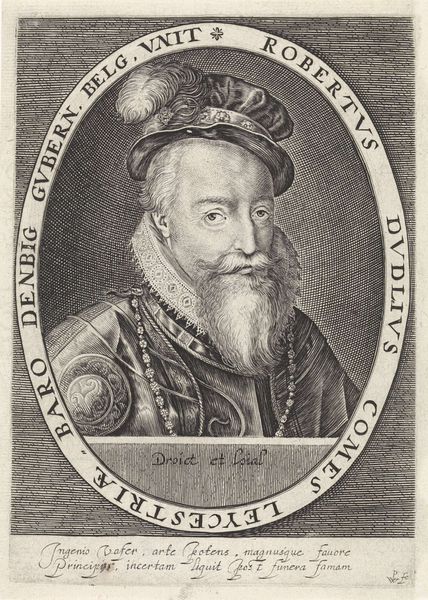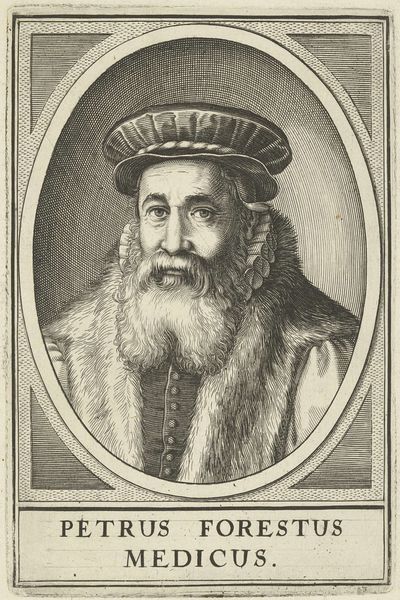
engraving
#
portrait
#
figuration
#
form
#
11_renaissance
#
line
#
portrait drawing
#
northern-renaissance
#
engraving
Dimensions: height 62 mm, width 60 mm
Copyright: Rijks Museum: Open Domain
This portrait of Jean Celosse was etched by Wierix around the turn of the 17th century. It’s a tiny thing, only about 6cm across, yet rendered with incredible detail. The print was made using a technique called engraving, which involves using a tool called a burin to incise lines directly into a metal plate. Ink is then applied to the plate, and then the surface is wiped clean, leaving ink only in the incised lines. Finally, the plate is pressed onto paper, transferring the image. Consider the incredible skill required to create such fine lines and textures, especially given the small size of the artwork. Wierix was a master of his craft, and this portrait is a testament to his technical ability. But beyond technical skill, prints like this had enormous social impact: they helped to spread images and ideas in a way that was simply not possible before the advent of printmaking. And so, the work embodies a signal moment in the history of media, as image production was industrialized.
Comments
No comments
Be the first to comment and join the conversation on the ultimate creative platform.
